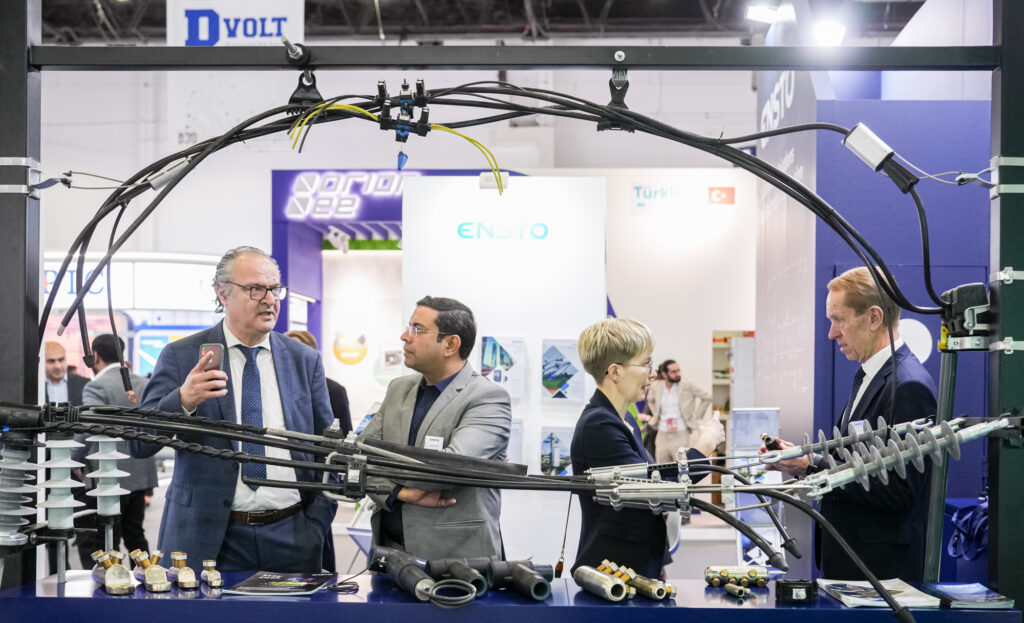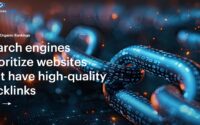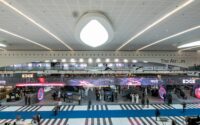Second Day Of Middle East Energy Spotlights Transformative Impact Of AI And Advanced Battery Pack Technology
Energy leaders discussed the transformative impact artificial intelligence, long-term planning, and advanced battery pack technology is having on the national, regional, and international energy sectors during a busy second day of Middle East Energy, supported by the UAE Ministry of Energy and Infrastructure.
Running from April 7-9 at Dubai World Trade Centre, this year’s event marks the 49th edition of the region’s leading energy summit. With more than 150 energy leaders and experts exploring transformative sector innovations and global energy market dynamics, the second day featured a keynote speech from Engineer Faisal Rashid, Senior Director – Demand Side Management at Dubai’s Supreme Council of Energy.
Speaking during the two-day Middle East Energy Leadership Summit, Eng Rashid outlined the Emirate’s pathway to achieving net zero by 2050, detailing key insights into sectors such as manufacturing, transport, waste, power, and water generation. He explained Dubai now has 54,000 buildings compliant with the 2014 Green Building Code, more than 15,000 buildings and villas retrofitted with energy efficient measures, and the number of electric vehicles has grown from just 500 in 2015 to 72,000 presently.
“We know the whole world is moving towards sustainability and we don’t want to wake up in 10-20 years and not have started any strategy or activations,” said Eng Rashid, who added the UAE is aiming for a 30 per cent reduction in electricity, water, and fuel consumption by 2030 and a 50 per cent reduction by 2050. “It’s a matter of urgency. It’s also why we update our strategy every five years.
Earlier in the day on the same stage, Mike Ballard, Vice-President of Industry Strategy and Innovation, Oracle Energy & Water, discussed the increasing integration of AI in utility operations, emphasising its role in customer engagement and grid management. Citing its application in construction safety using image analysis, as well as field work with drone technology and predictive network constraints to prevent service interruptions, Ballard said AI’s ability to forecast and respond quickly to unexpected issues – such as incursion of trees – makes it both essential and potentially lifesaving.
“One of the great tools of AI is its ability to predict when accidents are going to happen and to be able to prevent them,” he said. “When you have a tree hitting a line – which is a huge cause of wildfires around the world – the AI allows for responses in a second or two before the spark that leads to the fire even happens. This is an example of using AI to analyse, predict, engage customers, automate the orchestration of the energy grid, and then continuously improve.
“It’s something Oracle has been doing in the consumer engagement space for years through our own power program. We ask why our customers are using their washing machine or fish feeder or cooling their house at that particular time of day. Because we know if we can personalise those insights, we can drive behaviour that allows them to reduce their energy costs and in turn shift their energy demands.”
At the colocated Battery Show, conference attendees heard from Kenneth Hoffman, CFA, CIM, Founder and CEO at Traubenbach Associates, who highlighted a significant shift in the battery industry, moving from revolutionary concepts to practical evolutions. Hoffman stressed the importance of addressing consumer demands such as rapid recharge capabilities, showcasing advancements such as BYD Company’s ultra-fast charging and the commercialisation of solid-state batteries.
“The future of battery packs lies in changing the pack technology, not just the cell chemistry,” he said. “We’re seeing a fundamental shift where innovative designs, such as CATL’s CTP technology, allow for significant reductions in size and cost. This is crucial because it directly translates to more energy packed into the same space, benefiting both stationary storage and electric vehicles. Instead of constantly chasing new, expensive chemistries, optimising how we arrange and cool existing cells offers a more immediate, scalable path to improving performance and affordability,”
Hoffman also discussed the strategic importance of regional material processing and cell manufacturing in the Middle East and Africa – advocating for investing in new extraction and processing technologies to lower lithium costs and enhance regional production capabilities. Yet he also cautioned against focusing solely on battery recycling due to current overcapacity, instead encouraging investment in new technology and cost-effective manufacturing.
Mark Ring, Group Director, Energy Events at Informa Markets, which organises Middle East Energy, said this year’s event is shaping up to change the sector. “As we enter the halfway mark, we are already seeing some industry partnerships and discussions happening across private and public partnerships that have the potential to shape what the energy landscape will look like in the near future, especially when it comes to integration of technology and artificial intelligence.
“Tomorrow we welcome the Africa Business Leaders Forum, which is taking place under the theme of ‘Embracing Transformation in the Power Sector’. Visitors can expect to see some high-level discussions around mobilising capital, empowering local communities, and developing innovative financial mechanisms set to drive the continent’s energy landscape forward.”
To find out more about Middle East Energy, visit: middleeast-energy.com/en/home.html and to find out more about The Battery Show, visit: middleeast-energy.com/en/the-battery-show.html. And For more information on an invite-only Hosted Buyer Programme, visit: middleeast-energy.com/en/forms/hosted-buyer-programme.html







